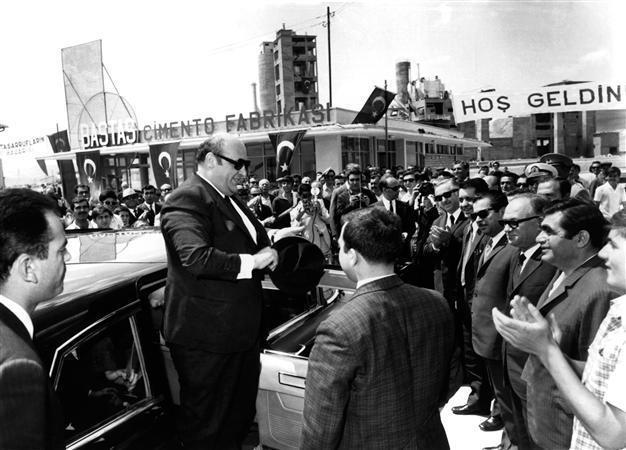Demirel leaves mark on Turkish economy
ANKARA - Anadolu Agency
 Former Turkish President Süleyman Demirel, who died early June 17, left his mark on the Turkish economy, as the country’s second highest growth rate was seen during one of his governing terms and he pioneered the launch of many large infrastructure investments.
Former Turkish President Süleyman Demirel, who died early June 17, left his mark on the Turkish economy, as the country’s second highest growth rate was seen during one of his governing terms and he pioneered the launch of many large infrastructure investments. Demirel, who served as prime minister seven times through the 1960s to the 1990s and was president from 1993 to 2000, also faced several economic crises.
According to data compiled by Anadolu Agency, Demirel became the prime minister of the country for the first time in 1965, when the development of a five-year economic plan began. Turkey ranked among the leaders in the world’s economic development lists with a development rate around 7 percent.
Under Demirel’s leadership, hundreds of new power plants and dams were opened, including the Keban Dam and the Kesikkaya Dam. The foundation was also laid for the first bridge across the Bosphorus Strait in Istanbul and the Aliağa Oil Refinery in the Aegean province of İzmir. The Turkish economy grew by 12 percent in 1966, reaching the second highest rate since 1950. The foundation for the Urfa Tunnel, which was built to carry irrigation water to the Harran Plain and the Mardin Plain in the east, was also laid during this term.
Economic crises
Demirel also saw several economic crises during his prime ministry terms. The 1979-80 Oil Crisis also hit Turkey, pushing the inflation rates up to record-high levels. His government instituted a number of economic measures, dubbed the “January 24 Decisions,” to make the economy function again. The Turkish Lira was then sharply devaluated.
Demirel summarized the Turkish economy’s journey between 1965 and 2000 with the following words at a press conference on May 15, 2000, one day before when was succeeded by the 10th Turkish president, Ahmet Necdet Sezer:
“Turkey has developed an average of 5 percent annually for the last 35 years. Turkey became the 16th-biggest economy in the world. Its population increased from 31 million to 65 million and the literacy rate rose from 48 percent to 95 percent. The income per capita increased from $300 to over $6,000 according to purchasing power parity. Turkey’s power generation capacity rose from 4,953 million kilowatts/hour to 130 billion kilowatts/hour by increasing the number of the dams from 20 to 200… We have now 80,000 doctors, although we had just 11,000. The number of tractors rose from 54,000 to 1 million in the last 35 years. Its cement production increased from 3 million tons to 40 million tons, its exports from $463 million to $30 billion and its foreign trade volume from $1 billion to $75 billion, among others… There was electricity only in 300 villages in 1965, but it is now more than 35,000 villages and 75,000 agricultural fields. Each part of the country now has schools, roads, water and light.
“Turkey has made a lot [of progress] in the last decades, but we have miles to drive. Turkey must reach European Union standards,” he concluded.
















